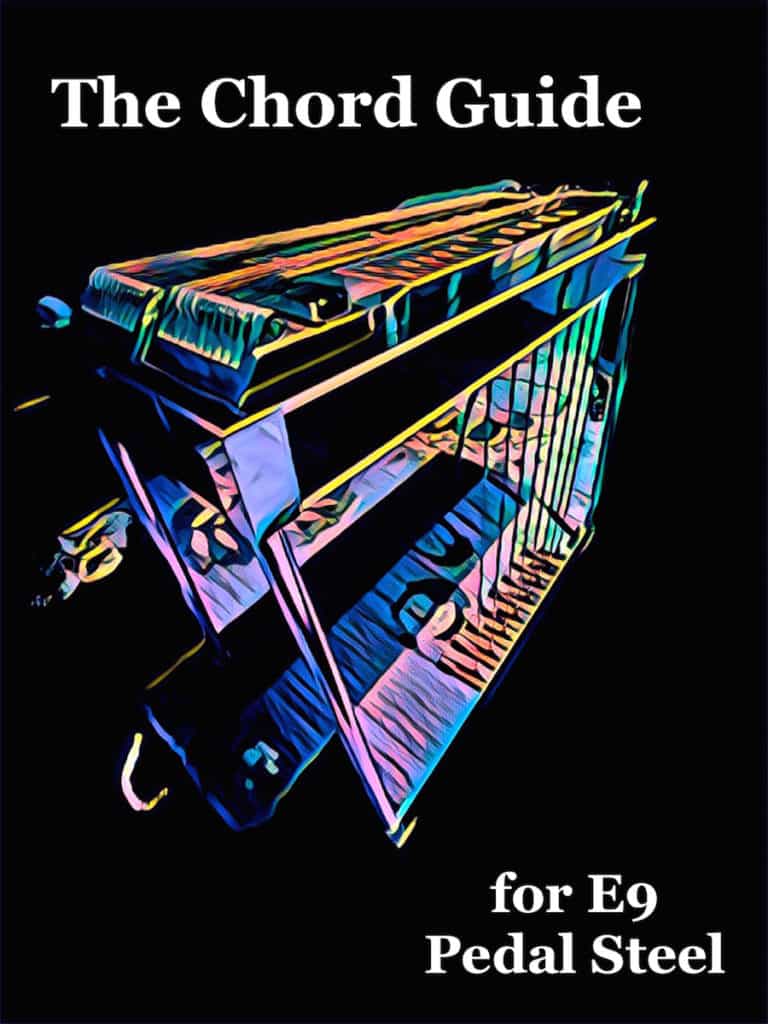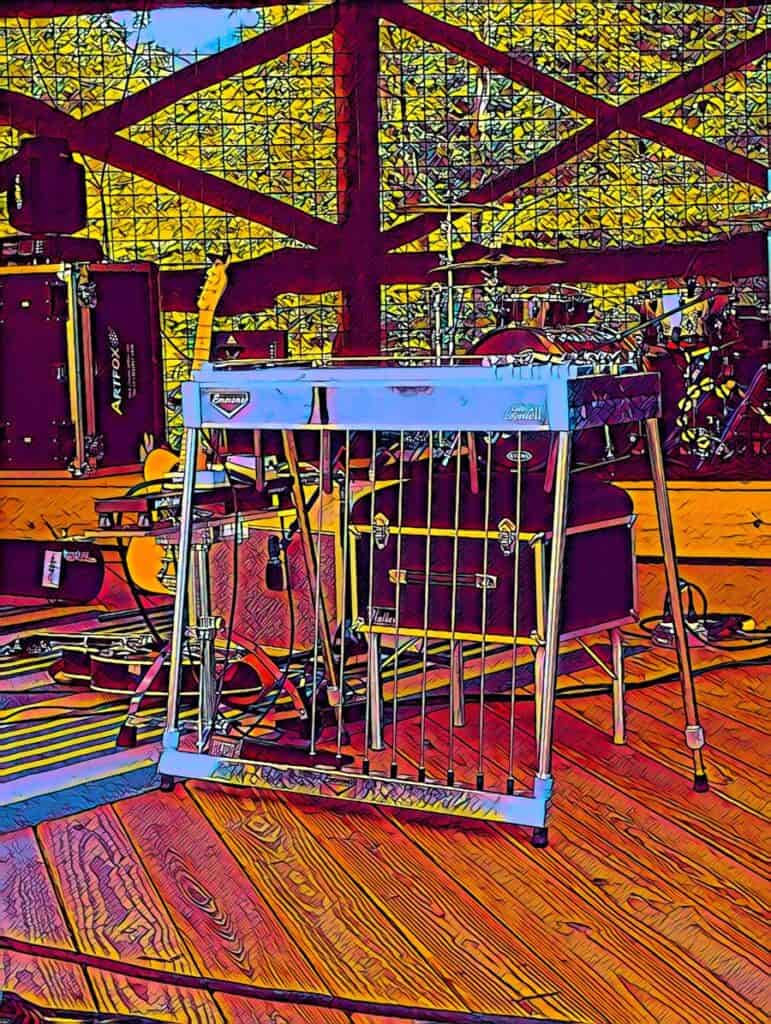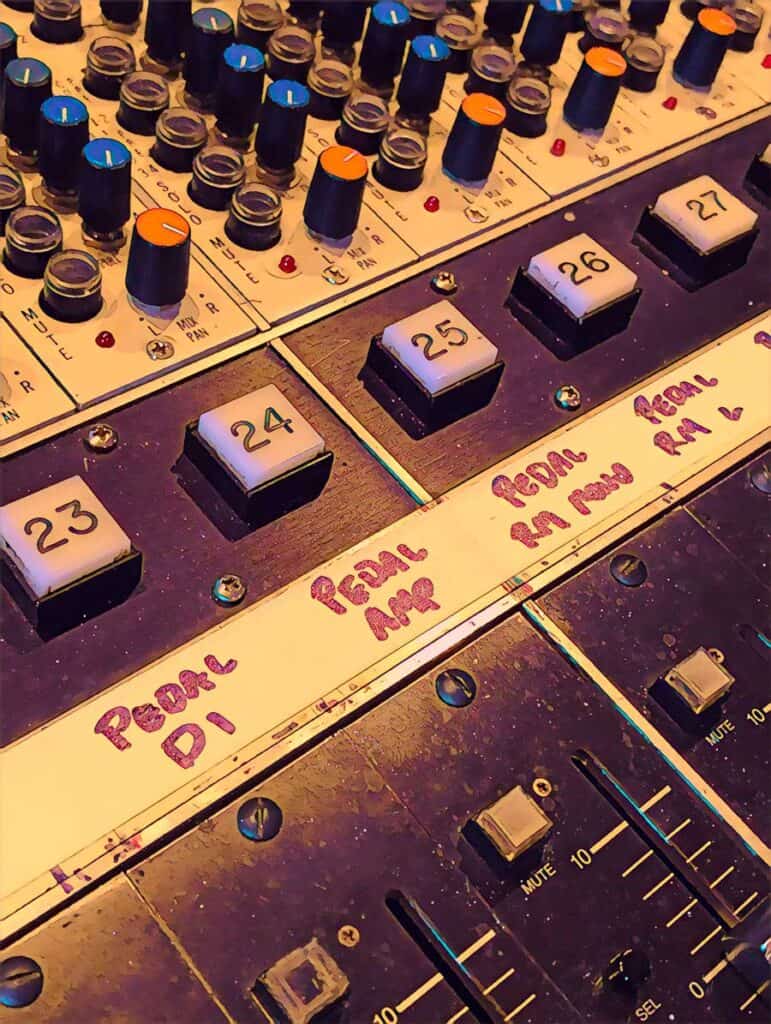Buddy Emmons paved a lot of paths for pedal steel players, and his approach to the instrument can certainly be used to improve aspects of your playing.
Like most things, on pedal steel you can learn through experience, study, practice, etc. However, one of the best ways is to take a closer look at some of your favorite players’ techniques, playing vocabulary, and sound/style to see what resonates with you.
Here are 5 tips for utilizing Buddy Emmons’ playing approach to pedal steel…
1) Pick Fully and Confidently
When you first start playing pedal steel, chances are you’ll encounter challenges with right hand picking and blocking. If you come from a guitar background, having to learn how to block strings can seem like the ultimate speed bump for slowing down your technique and playing. But like most things, with patience and practice you can learn how to do it effectively and enjoyably.
One of the best things you can do to improve your right hand technique and tone is to pick “like you mean it”. Simply put, picking with a higher amount of strength on the strings can produce a full, confident sound in your playing. But what does this actually mean for your playing?
You’ll likely notice an increase in the amount of sustain you create with the notes you play, which can be very helpful in conjunction with your volume pedal. Also, your tone can sound fuller and more rounded – you’ll likely sound better through any amp or pedal steel you play, which means you’ll develop a good tone no matter what gear or equipment you use.
This can actually make the process of acquiring and selecting specific pieces of gear/equipment for your rig more enjoyable. You’ll start buying or using gear that accentuates your tone and further shapes it, instead of trying to use gear to cover up your tone or potential bad playing habits. When you start with a strong foundation in your playing techniques and tone, then you can use gear to further refine and shape your tone – almost like detailing it, where the gear and equipment you use is like the cherry on top.

Buddy Emmons had one of the best right hand techniques ever, and you can tell this by the tone he got and the speed and accuracy with which he could play notes. He is known as one of the fastest and most precise pickers (especially when it comes to single note solos on the C6 neck), yet his tone is still top-notch and uncompromised. Not to mention he could play with a lot of touch and finesse as well. He had the best of both worlds when it came to right hand picking and blocking – he could play hot solos and licks, then slow things down and play beautiful ballads or slower tempo songs.
Keep in mind that you don’t need to pick too hard or forcefully. You don’t want to be too aggressive with it that you’re over-exerting yourself and creating unwanted tension in your right hand. Plus, it can be nice to leave yourself a little bit of headroom in your picking “level”, so that you can pick certain notes harder when you want to emphasize them within a song – like at the climax of a solo, when you want a lick to stand out, or when the band is dynamically picking things up within the song.
So how do you pick more fully or confidently? First things first, don’t be too timid when you pick. It’s likely that a cause of picking too lightly can be from a hesitancy with your technique – you won’t “feel” like picking harder if you’re unsure of your sound. Ironically, the key to a better sound is often picking more fully. So go ahead and develop the habit of picking more fully and build on the sound you are creating every time you pick a note – you’re shaping your tone and building its foundation every time you play a note – so make the most of it all the time and then you will naturally be utilizing it all the time without thinking about it: it will become ingrained.
2) Play Single Notes w/out Pedals
One of Buddy’s most impressive playing feats was his ability to produce great solos using single notes only, much like guitar players do. The pedal steel has a great capability for playing two notes at a time, which are often harmonized thirds or sixths. But it can be easy to forget that the pedal steel has just as many capabilities as other instruments when it comes to single note soloing.
A lot of Buddy’s single note solos were on the C6 neck, likely for a couple of reasons. One, he likely felt more comfortable playing this tuning and navigating the fretboard on it – it’s the tuning he developed his playing on early in his career and as a youngster. Secondly, the C6 lends itself well to single note improvisation. The intervals of the tuning can make it easier to move the bar to play notes in succession, whereas the E9 tuning often relies on pedals to do this.
This is also worth pointing out – Buddy didn’t rely on pedals to create single note solos. Sure, he could utilize pedals with the best of them, and there’s nothing wrong with using pedals for solos or playing. When to use pedals, and when not to use pedals, often comes down to how you want to express or voice a note at that moment. Will the note sound better for this song/style (at this moment in the song) with the use of pedals, or purely with the picks and bar?
Of course, this also depends on what neck you’re playing – the E9 neck certainly lends itself well to the use of pedals “bending” the strings to create sounds. But you may not want to utilize this type of sound for everything, as a little variety goes a long way – most people don’t like things that are too predictable.
So next time you’re playing, try creating licks or solos by picking one note at a time with your right hand and moving the bar on the fretboard (or at positions) to find the notes you want to play. Buddy did this masterfully, and so can you!
3) Utilize Pockets
Buddy knew the fretboard, and the notes contained on it, like the back of his hand. There are some videos where he plays without a fretboard, and he also has a good reputation for playing without looking at it. Check out some of the discussions of his practice sessions in the pitch-black dark, which are a great way to play by “feel” and deepen your ears. But how did he gain the ability to navigate the fretboard so freely?
One of his approaches to this was utilizing pockets or particular positions on the fretboard. While the discussion of pockets can annoy some players, a quick look at this article written by Buddy Emmons shows just how thoughtful and important this was to him. If he took the time to write this, in an effort to share how he acquired and utilized the skills that so many of us admire, then obviously it was important to him.
When learning, we usually can only digest so much information at a time – trying to learn too vast amount of information at a time is usually not effective for most people. This is why flashcards, focusing on sections/chapters, or chunking information into bite-size pieces can be so effective. The same goes for learning notes on the pedal steel’s fretboard. By breaking up the fretboard into about five positions (pockets), we can begin breaking it down into manageable amounts of information.

Think about it this way: if you learn one position like the back of your hand, you’ll have no problem navigating it while playing. But what happens when you move the bar up three frets along the fretboard? You’ll immediately get lost and lose all the prowess you had on the fretboard. Now what if this position you moved to (that would make you get lost in your playing) you also knew like the back of your hand? Voila, you are right back in action!
So basically, if you know all the positions (there are usually five at the most), then you can easily traverse the fretboard with ease and control. Each pocket is just two or three frets away from the next – so a simple bar move gets you there in no time and there’s literally no way to get lost on the fretboard.
Your mind will recognize it almost instantly from having it memorized through practice and repetition. Just like riding a bike, you’ll no longer have to think about it, and it will come naturally. This is where the fun in playing really comes out – when you are free to create in the moment without being hindered.
Buddy knew this well, and his playing showed it. He too would get lost sometimes during a solo or playing, and he would quickly anchor himself by finding a pocket he was near. Once you find this, you’ll have licks, patterns, or just stability to create music in that moment.
4) Be Creative and Authentic
One of the best things you can do to develop your playing on the pedal steel is to be creative and authentic. Buddy Emmons knew this well – from a creative standpoint, he let his curiosity and intuition guide him into new and undiscovered facets of the instrument and its sounds. This played a large part in helping him to develop the instrument and its tunings, pave new paths in certain genres/styles that the pedal steel wasn’t always common in, and develop a playing style (or his own “voice” on the instrument) that was fresh and innovative – it was authentic.
Perhaps Emmons’ creativity and authenticity can be best described through some examples of his work: his innovative intro and playing on “Night Life” was a treat for the ears. It’s hard not to be awed by his playing (and the story behind the recording) on Steel Guitar Jazz, his session work with Ray Charles (among many other great musicians of various backgrounds), as well as his playing with Danny Gatton.
It is important to draw and learn from players of the past, and the playing vocabulary that has resulted from the history of the instrument and its playing. However, what you do with this knowledge is up to you: finding your own voice on the instrument through creativity and authenticity will say a lot about your playing and what catches listeners’ ears.
After all, you usually don’t have time to think in the actual moment of your playing. Muscle memory, playing intuition, and using your ears and listening to what’s happening in the moment; these all speak to what’s usually happening when you sit down and play the pedal steel – it’s happening in that present moment. If you let your interests, curiosity, creativity, and ingenuity shine through, there’s really no limit to what you can do on the pedal steel. This is what Buddy Emmons took to heart and why he was able to pave so many new paths on the instrument that are still innovative, and filled with ingenuity to this day.
5) Improvise
If there was perhaps anything that Buddy Emmons was most skilled at, it was his improvisational abilities. It doesn’t take long when listening to his playing to be astounded by his improvised solos – his C6 single note improvisation is fantastic. Creativity, innovation, and authenticity all walk hand in hand with the art of improvisation – so it is easy to see why many of the aspects of the last section can be reflected in his improvisation.
Jazz is a musical form that has found great catalyzation through improv – and Buddy Emmons was a steel guitar pioneer in jazz music. It is very evident how passionate Emmons was about jazz music and playing steel guitar in this idiom. A quick listen to Steel Guitar Jazz (worth another mention) will show how adept Emmons was at playing jazz on steel guitar, and his solos are a great display of improvisation on pedal steel guitar.

Improvising is in many ways a creative exercise into the unknown – what you come up with is an expression of that moment and there’s a sense of freedom in that. Practice, a knowledge of the fretboard, and a deeper sense of musical understanding (or having a good sense of theory, or a great ear) all contribute to growth in the improvisational approach – and all of these aspects can help us develop on the pedal steel.
Buddy Emmons certainly had a good habit in these components of playing. Every time he plays a jaw-dropping improvised solo, it is an indirect statement of his practice discipline, knowledge of the fretboard/positions, and his musical intuition. Focusing on these areas of your playing approach to the instrument can pay off in the long run – chipping away at these things really adds up, which is evident in Emmons’ playing.
Conclusion
Although everyone’s playing style is different, there are technical and musical aspects of an instrument and the language of music that we can all draw from to become better players. Buddy Emmons displayed an innate sense of this and helped push his own playing, as well as the instrument, to new heights. While there are a lot of factors that go into how we play an instrument and what moves us musically, having certain approaches and mindsets for playing can go a long way.
So next time you sit down at the pedal steel, keep Emmons’ approach to the instrument in mind and it just may open some new doors for your playing. Buddy Emmons was a phenomenal player that we can all likely draw from, and having an awareness of some of his playing strategies and knowledge can provide a refreshing outlook to playing the pedal steel.
Thanks for checking out this page, hope it is helpful and makes playing more enjoyable! If you’re interested in diving deeper into playing E9 pedal steel, check out these resources and guides…
The Chord Guide for E9 Pedal Steel (E-Book, Digital Download)

Learn the chords on the E9 neck in a way that makes playing simple and enjoyable…
- Almost Every Chord You’ll Ever Need for E9
- Intuitive and Easy to Use
- Make Use of Pedal and Lever Combinations
- Example Tabs of Chord Movements
- Easily Utilize the Nashville Number System
- Great For Any Key and Style of Music
Includes a bonus section of over a hundred pages of extra chord charts, key references, and more!
You may also like…
200 Country Riffs & Licks for E9 Pedal Steel
Add these country licks to your playing repertoire…
- Easy to Read Format
- Includes Rhythmic Notation
- Playing Over Chord Changes
- Great for Country, Alt-Country, & Honky-Tonk Styles


The Scale Book for E9 Pedal Steel
Over 1,000 Pages with Tabs and Diagrams!
- Easy to Use Reference for Practicing
- All Major and Minor Pentatonic Scales, Modes, Major Scales
- All Keys, and Covers the Fretboard
- Includes Pockets of Scales

Harmonized 6ths
- Hundreds of Riffs, Licks, and More
- How To Play Sixth Intervals on the E9 Neck – Over Any Chord
- Utilizes The Pedals and Knee Levers

Right Hand Picking & Blocking
- An In-Depth Guide to Picking and Blocking
- Perfect Your Technique
- Includes Graphics, Illustrations, & Practice Exercises
